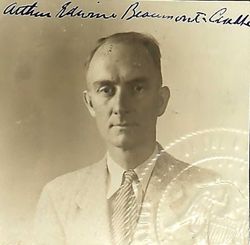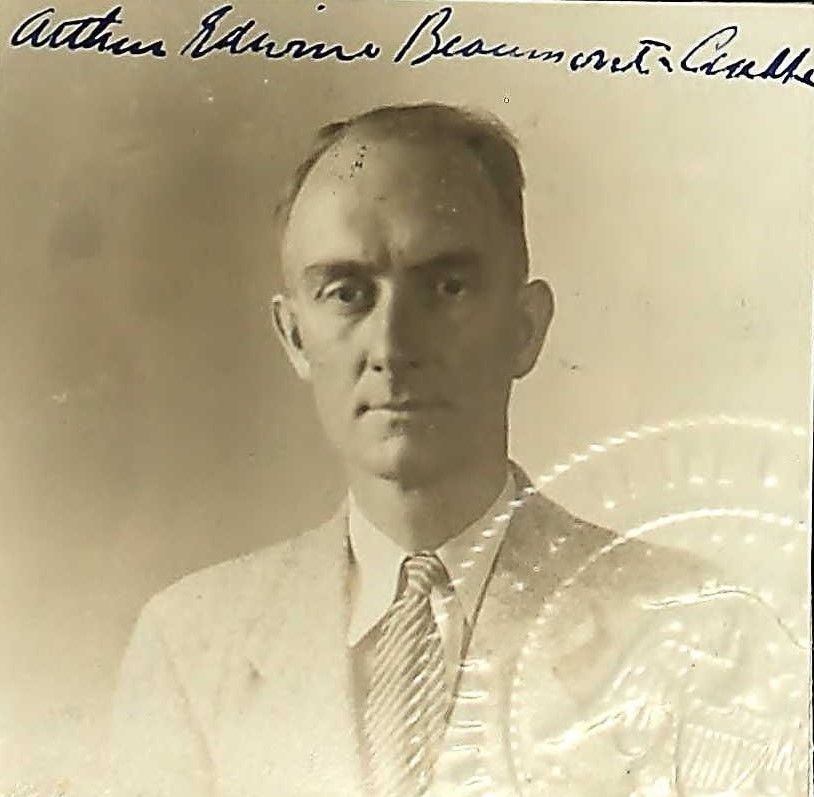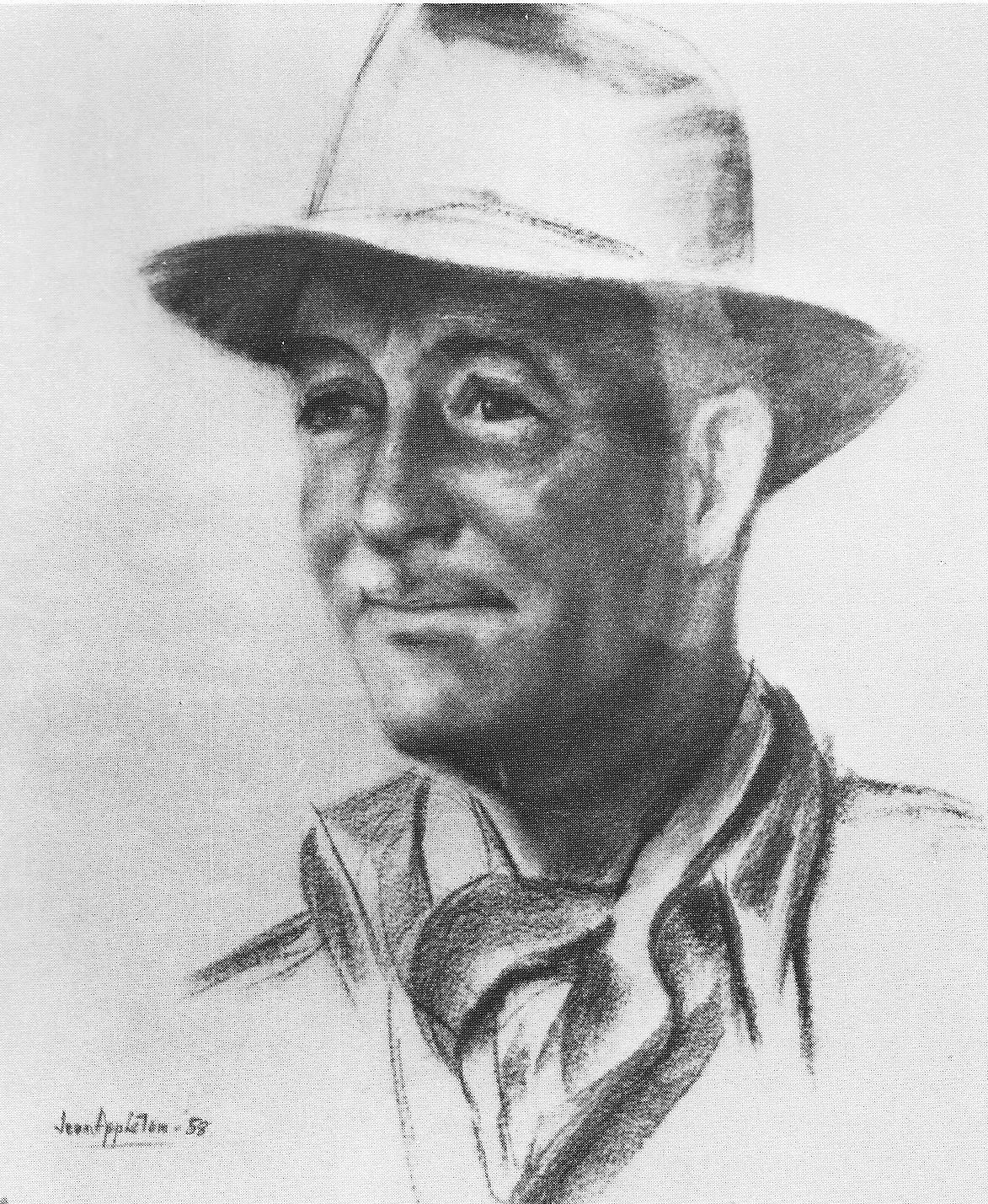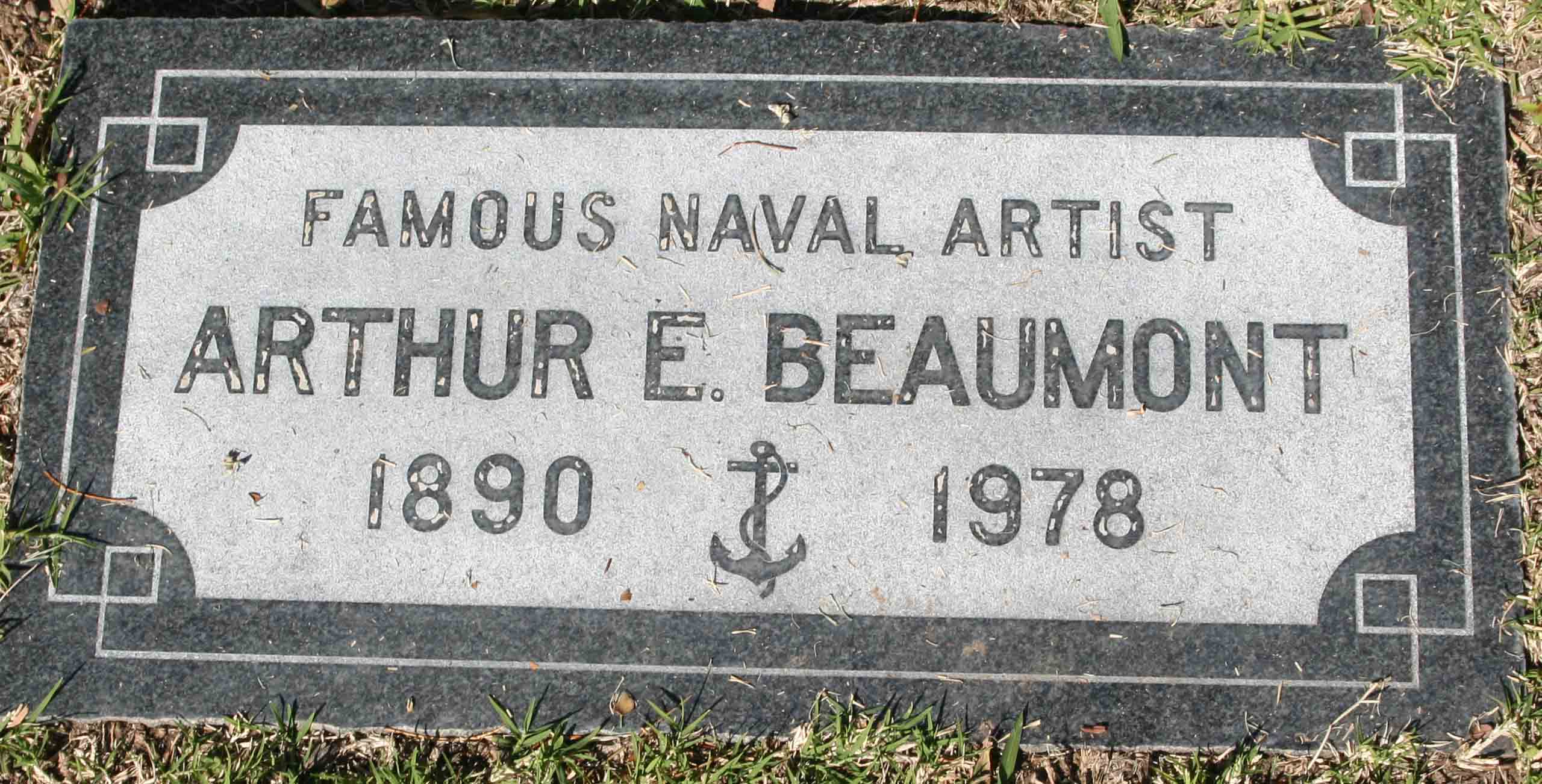In 1932, he began a life long association with the United States Navy. As a civilian, he was commissioned to paint the portraits of several naval officers, including Admiral William Leahy. Leahy was impressed with Beaumont's talent, and offered him the opportunity to paint the fleet as a commissioned naval reserve officer. He accepted the offer, and his first official art commission was of thirty-nine warships entitle "Our Glorious Fleet." His prolific career as official naval artist took him to the decks of warships during naval battles of World War II, to both the north and south poles, and also to the south Pacific during the atomic bomb testing. In early 1941, he was commissioned by the National Geographic Magazine to paint eight battleships, such as the U.S.S. Arizona, U.S.S. Oklahoma, U.S.S. Utah; these ships would be destroyed later in the year in the surprise attack on Pearl Harbor, December 7, 1941. In 1946, while painting the sinking of the Japanese battleship Nagato during the atomic testing, he was left adrift and rescued several days later. In the years following the war, he continued to paint naval vessels, but his interest turned to historic ships such as the U.S.S. Constellation, and U.S.S. Constitution. He had a prolific career, and many of his paintings hang in art galleries around the world including the National Museum of Art, the White House, the Pentagon, and the U.S. Naval Academy. He was personally awarded the Meritorious Service Citation from President Franklin D. Roosevelt, for his contributions during the war. He rose to the rank of lieutenant commander in the Navy, refusing the offer of honorary rear admiral because he wanted to be able to walk on any ship without ceremony or fanfare.
In 1932, he began a life long association with the United States Navy. As a civilian, he was commissioned to paint the portraits of several naval officers, including Admiral William Leahy. Leahy was impressed with Beaumont's talent, and offered him the opportunity to paint the fleet as a commissioned naval reserve officer. He accepted the offer, and his first official art commission was of thirty-nine warships entitle "Our Glorious Fleet." His prolific career as official naval artist took him to the decks of warships during naval battles of World War II, to both the north and south poles, and also to the south Pacific during the atomic bomb testing. In early 1941, he was commissioned by the National Geographic Magazine to paint eight battleships, such as the U.S.S. Arizona, U.S.S. Oklahoma, U.S.S. Utah; these ships would be destroyed later in the year in the surprise attack on Pearl Harbor, December 7, 1941. In 1946, while painting the sinking of the Japanese battleship Nagato during the atomic testing, he was left adrift and rescued several days later. In the years following the war, he continued to paint naval vessels, but his interest turned to historic ships such as the U.S.S. Constellation, and U.S.S. Constitution. He had a prolific career, and many of his paintings hang in art galleries around the world including the National Museum of Art, the White House, the Pentagon, and the U.S. Naval Academy. He was personally awarded the Meritorious Service Citation from President Franklin D. Roosevelt, for his contributions during the war. He rose to the rank of lieutenant commander in the Navy, refusing the offer of honorary rear admiral because he wanted to be able to walk on any ship without ceremony or fanfare.
Sponsored by Ancestry
Advertisement
Records on Ancestry
Advertisement













